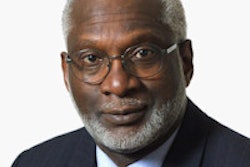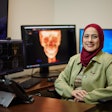Twelve years after issuing a landmark report that offered a framework for improving access to oral health, former Surgeon General David Satcher, MD, maintains that profound oral health problems still exist for large portions of the U.S. population.
Speaking at a conference July 16-17 on unmet oral health needs sponsored by the Morehouse School of Medicine and the Sullivan Alliance, Dr. Satcher issued a renewed call for action to expand access to oral healthcare, particularly in light of the millions of children expected to gain dental benefits through the Affordable Care Act (ACA) in 2014.
"We now have an opportunity [with the ACA] to improve access to dental health services," Dr. Satcher stated in a press release. "But how do we put in place a healthcare system that meets the needs of all? Can we, in fact, increase the supply of oral healthcare providers by expanding the opportunity for people to serve? What the ACA said is that people should be able to practice to the full extent of their potential."
Dr. Satcher expressed concern about the ability of the current dental workforce to meet demands for dental care. As part of the provisions enacted under the ACA, more than 5 million additional children will be entitled to dental health benefits.
At issue is the fact that there are not enough providers to meet the need, he said. Currently, only 20% of all practicing dentists accept Medicaid patients, and the Health Resources Services Administration estimates a current shortage of approximately 10,000 dentists, he added.
"We now have an opportunity to dramatically increase coverage," Dr. Satcher said. "But adding dental benefits will not translate into access to care if we do not have providers in place to offer treatment."
According to Dr. Satcher, states must pursue all avenues to expand access to dental care, including exploring the creation of new dental providers, and building a cadre of ethnically diverse, culturally competent dental practitioners, as well as expanding the reach of the dental team with other healthcare professionals.
He advocated the launching of workforce pilot programs to determine how best to expand access to dental care. "I think we need more dentists, and I think we need more professionals who are not dentists but who can contribute to oral healthcare services," Dr. Satcher said. "The real key is whether or not systems are going to ensure that everyone is allowed to practice to the level of their potential."
More than a dozen states are exploring creating new midlevel dental providers, also known as dental therapists, to expand access to preventive and routine dental care. Dental therapists currently practice in Alaska and Minnesota, and Connecticut and Oregon are planning pilot projects, while other states have put forward legislation to allow dental therapists.
"Access to oral health is not what it should be in this country," said Louis Sullivan, MD, president of the Sullivan Alliance and former secretary of the U.S. Department of Health and Human Services. "With the Affordable Care Act, millions more will have access to oral healthcare. We, as health professionals, must lead the effort so that we are prepared to meet the need. We need now to develop strategies to provide those services."
Children, minorities, and the poor are disproportionately affected by the oral healthcare crisis, according to Dr. Satcher:
- 37% of African-American children and 41% of Hispanic children have untreated tooth decay, compared with 25% of white children.
- American Indians and Alaska Natives have the highest rate of tooth decay of any population: five times the national average for children ages 2 to 4.
- 72% of American Indian and Alaska Native children ages 6 to 8 have untreated cavities -- more than twice the rate of the general population.
- More than a third of all poor youngsters ages 2 to 9 have untreated cavities, compared with 17% of children who are not poor.



















